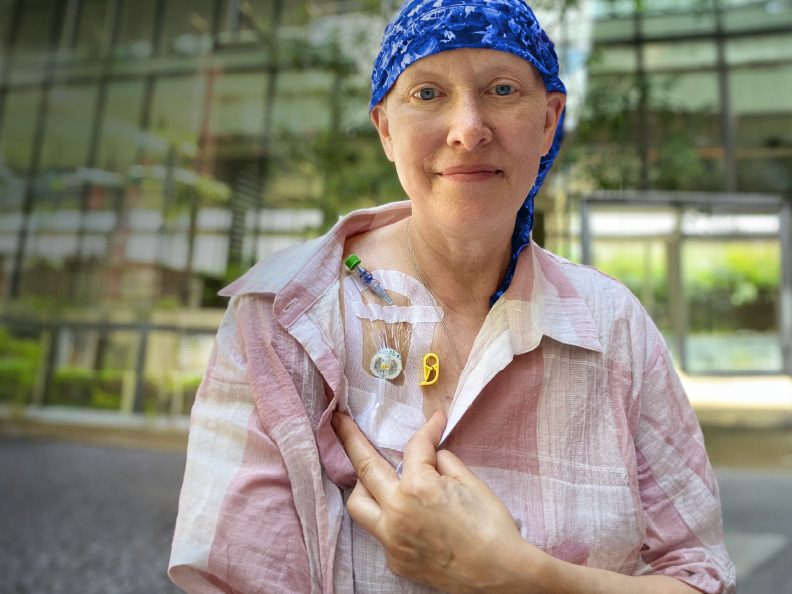Your gift is 100% tax deductible
Mini Mouse Lung Organoids Offer New Lab Model for Research
Researchers developed a tiny 3D replica (organoid model) from healthy mouse lung cells to study early steps after KRAS gene mutations in lung cancer.
The Challenge
Every cell in the body is made up of genes. The KRAS gene belongs to a class of genes known as oncogenes. Oncogenes play a big part in telling a cell when and how it should grow and divide. But when oncogenes somehow change (mutate), they have the potential to cause normal cells to act differently, make them grow and divide too fast, and become cancerous. Mutations in the KRAS gene are common. They are present in about 25 to 30% of lung adenocarcinomas, the most common type of non-small cell lung cancer (NSCLC). Lung cancers that test positive for KRAS gene mutations typically have a poor prognosis and tend to be resistant to treatment.
Research has shown that mutations in the KRAS gene are the driving force in the development of certain types of lung cancer. However, not much is known about what early events happen to make a normal cell with a mutant KRAS gene develop into a tumor.
That knowledge gap is at least partly because the models that researchers use to study lung cancer haven’t provided insight into those early events.
For instance, researchers often use mice that have been genetically engineered to model a specific disease, like lung cancer. These are in vivo experiments because tests are done on a whole, living organism.
Featured Term:
Oncogenes
A group of genetic mutations that have the potential to cause cancer and that give cancer cells an advantage to grow and survive.
Tests in genetically engineered mouse models (GEMMs) have shown researchers that mutations in the KRAS gene cause a normal cell to become abnormal, leading to lung adenocarcinoma, but they haven’t studied what happens immediately after that step.
Another model that cancer researchers use to study lung cancer are organoids. These mini organ models are in vitro tests, meaning they are studied in a lab, not a body. Organoids are tiny, three-dimensional tissue cultures that provide a model for a particular organ, like a lung. Prior to this study, different types of cancers, including lung tumors, were used to generate organoids. However, organoids grown from established tumor samples do not show the early events that happen in tumor development.
This limited understanding about what happens after KRAS mutation is likely one reason there are few treatments that effectively target KRAS-related lung cancers.
The Research
The lab run by Carla Kim, PhD, has developed an organoid culture system that grows tiny replicas of lungs, providing a new way to study lung diseases and cancer in the lab and to find new treatments.
In this study, Carla Kim, PhD, and her colleagues used normal lung cells from genetically engineered mice to develop lung organoids that worked as a tool to study how KRAS-related tumors start and progress.
We know very little about the early events that transform a normal lung cell into a cancer cell. In this study, we were able to use tumor samples from people who had been diagnosed with an early stage of lung cancer to show that our organoids truly mimic what happens in patients at the very early stages. We can see changes in the organoids within 7 days that can take months to see in lab mice and even longer, probably years, in patients.”
Carla F. Kim, PhD
Children's Hospital Boston
ACS Research Grantee

She discovered that cells lost their differentiation in an early stage of tumor development. This means those tumor cells were not developing the specialized function that a cell should have— and this is a characteristic of aggressive cancer cells. It’s been a long-held idea that tumor cells hijack cell differentiation in late-stage, metastasizing tumors. But Kim’s results suggest that this differentiation occurs at the earliest stage of disease, not at the end.
Importantly, Kim’s research team studied additional datasets from early-stage KRAS mice, human KRAS lung organoids, and samples from patients with early-stage lung cancer with KRAS mutations. Like her mouse KRAS organoids, the three other models showed that the loss of differentiation occurs as an early event.
The authors said, to their knowledge, theirs is the first study to show that loss of differentiation occurs in early-stage adenocarcinoma. They offer the cancer research community their datasets and their organoid systems as tools to rapidly and accurately model adenocarcinoma in vitro, specifically to study tumor initiation and progression in a controlled environment.
“Our organoid systems can be used,” in the lab and transplanted, they said, to shed “light on new ways to intervene in lung cancer progression.”
Why It Matters
These findings offer a rare glimpse into the early progression of KRAS-driven lung cancer and demonstrate the utility of using organoids as a model.
The datasets generated in Kim’s work will serve as resources for identifying key biomarkers in patients with KRAS-mutant lung cancers that could lead to the development of new and more effective targeted therapies.



